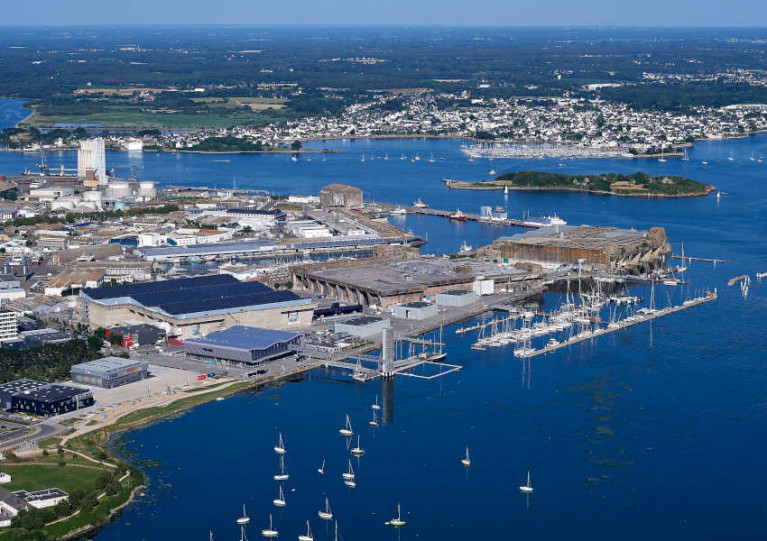Displaying items by tag: Brittany
Little and Large: Small Sailboat in Distress Finds Unlikely Rescuer in Form of 50m Tall Ship
A small sailboat in distress off the French coast recently had the most unlikely of rescuers in the form of an enormous tall ship.
The 47m Götheborg of Sweden was en route to Jersey on Tuesday, 25 April, when it received a distress call from the MRCC reporting a sailing boat that had lost its rudder and was adrift some 50 nautical miles from the coast of Brittany.
As the closest vessel to the casualty boat, Corto, the tall ship responded immediately to its rescue — a surprising turn of events for the smaller boat’s crew.
“We repeatedly emphasised that we were aboard a small eight-metre sailboat, but the response was the same each time: ‘We are a 50-metre three-masted sailboat, and we offer our assistance in towing you to Paimpol,’” said David Moeneclaey, skipper of the Corto.
“We were perplexed by the size difference between our two boats, as we feared being towed by a boat that was too large and at too fast a speed that could damage our boat.”
 Keeping watch from the deck of Götheborg of Sweden on the Corto under tow | Credit: Linus Hjelm
Keeping watch from the deck of Götheborg of Sweden on the Corto under tow | Credit: Linus Hjelm
The arrival of the Götheborg was even more surreal for Moeneclaey: “We did not expect to see a merchant ship from the East India Company of the 18th century. This moment was very strange, and we wondered if we were dreaming. Where were we? What time period was it?”
Despite the skipper’s concerns, however, the tow was set up without issue and the smaller boat was handed off to the care of a French search and rescue vessel from the port of Paimpol the following morning.
Moeneclaey added: “This adventure, very real, was an incredible experience for us. We were extremely lucky to cross paths with the Götheborg by chance and especially to meet such a caring crew.
“Dear commander and crew of the Götheborg, your kindness, and generosity have shown that your ship is much more than just a boat. It embodies the noblest values of the sea, and we are honoured to have had the chance to cross your path and benefit from your help.”
Commenting later, the Götheborg team said: “For us it was an honour to be able to help out, and an experience for everyone on board!”
Götheborg of Sweden was built in 2005 modelled after a typical 18th-century merchant vessel. In a concession to the 21st century, the ship is powered by two Volvo Penta 404 kW diesel engines when its sails can’t catch the wind.
A temporary concession has been introduced for British or Channel Island nationals wishing to visit the ports of Saint Cast and Saint Quay in France.
The concessions will run for the 2022 summer season now under way and which concludes on 30 September, the RYA says.
Recreational boaters wishing to visit Brittany via the ports of Saint Quay or Saint Cast will be required to complete a modified Declaration of Arrival/Departure form.
On Arrival
Recreational boaters planning to visit either of the ports will be required to complete the Declaration of Arrival form, one form is necessary per boat. These must be completed and sent to the marina office email address displayed on the form. The marina office will then forward the completed document to the maritime authorities in Saint-Brieuc for processing.
Once the form has been validated by the authorities, a copy will be returned to the marina office, who will then return it to the boat concerned. This copy should then be kept on-board at all times during the period that the boat remains in the Schengen Area so as to be available in the event of a customs visit, on land or at sea. The boat will then be cleared to sail elsewhere in Brittany.
Boaters are advised note that if entry into the Schengen Area is via the Brittany ports of Saint-Quay or Saint-Cast, then departure from the Schengen Area of Brittany must also be via either of these two ports.
On departure
Recreational boaters wishing via the ports of Saint-Quay or Saint-Cast must download and complete the modified Declaration of Departure document. Similarly, one copy only is needed per boat and should be completed and sent to the email address of the departure marina. The marina office will then forward the completed document to the authorities in Saint-Brieuc. Once validated, a copy will be returned to the marina for onward transmission to the boat concerned. The boat will then be clear to leave the Schengen Area.
For further information, visit the Port D’Armor website, where you can also download a copy of the Arrival/Departure form.
Find further general information about cruising abroad on the Boating Abroad hub page. Further questions can be directed by email to [email protected].
Lorient to Host Start of The Ocean Race Europe
The French town of Lorient in Brittany has been chosen as the starting point for The Ocean Race Europe.
The iconic port, in the heart of the renowned Bretagne Sailing Valley, will host the start for both the IMOCA and VO65 fleets as they charge south across the Bay of Biscay.
This will mark the first racing under The Ocean Race banner for the high-tech IMOCA class boats and the one-design VO65 class.
For the teams, The Ocean Race Europe will be the first step on the journey towards the 2022-23 edition of The Ocean Race round-the-world event — and for some IMOCA teams for the Vendee Globe 2024 as well.
“Lorient has been an important part of the history of The Ocean Race, as a much-loved stopover port in 2011-12 and 2014-15,” said Johan Salen, managing director of The Ocean Race.
“Now Lorient becomes the starting port for a new, Europe-oriented event, and a fresh, exciting story begins. We are racing from the heart of what we call the French Sailing Valley and into the heart of Europe, providing a platform for extraordinary sport and driving change towards a healthier planet along the way.”
The Ocean Race Europe brings together the top international sailors and teams from the two classes that compete in the next around the world race, the VO65s and the IMOCA 60s.
The two fleets will race in a fully crewed configuration in stages between iconic European cities, from the Atlantic Ocean to the Mediterranean Sea and a finish in Genoa, Italy in the third week of June.
Lorient will host the start over the last weekend in May. As the home port for many IMOCAs, Lorient La Base is well positioned to welcome the race boats and teams ahead of the start of The Ocean Race Europe.
“Lorient La Base is proud to host the start of The Ocean Race Europe. With almost 50 local companies related to offshore sailing, Lorient Agglomération is a European renowned territory of nautical excellence,” said Fabrice Loher, the president of the Lorient Agglomération and Mayor of Lorient.
“Lorient La Base has all the advantages of a consolidated ecosystem to support the greatest sailing teams. This is why the top skippers chose Lorient La Base as their home port.
“The start of The Ocean Race Europe is a new step to consolidate the reputation of the city as a host port for amazing offshore sailing races.”
The fleets will assemble in Lorient ahead of the start from Friday 28 May.
Prior to arriving in Brittany, the VO65 fleet will participate in The Ocean Race Europe Prologue event, beginning in the Baltic Sea in early May and winding south before gathering at Lorient La Base at the end of the month, alongside the IMOCA fleet.
Organisers of The Ocean Race Europe are prioritising the health and safety of all competitors and stakeholders and will follow all relevant regulations and advisories with respect to COVID-19.
Kitesurfing Adventurer Plans Crossing From France to Ireland
#Kitesurfing - Bruno Sroka aims to complete an epic solo journey from France to Ireland on his kitesurfing board, powered only by the waves and the wind.
As Surfer Today reports, the French kitesurfer - who already has a crossing of the English channel to his credit - has set himself the challenge next month of surfing from L'Aber-Wrac'h in Brittany to the south coast of Ireland, a distance of some 240 nautical miles.
And it will be just the first of three adventures Sroka has lined up for himself, as he aims to follow this feat with a crossing of the Mediterranean in 2014, and finally the mighty Atlantic Ocean in 2015.
Indeed, his ambitious plans do little to dispel the impression that kitesurfing is a sport for the bravest alone - even too dangerous for the Olympics!
Surfer Today has more on the story HERE.































































